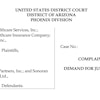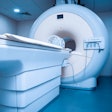The rising use of medical imaging technology in the U.S. has drawn increased attention to loopholes in U.S. laws that allow non-radiologist physicians to install and operate imaging equipment in their own offices.
Dear AuntMinnie Member,
The rising use of medical imaging technology in the U.S. has drawn increased attention to loopholes in U.S. laws that allow non-radiologist physicians to install and operate imaging equipment in their own offices. Closing these loopholes is key to stopping such physician self-referral and maintaining the quality of imaging services, according to an editorial we're featuring this week in our Imaging Center Digital Community.
While the in-office self-referral exemption seemed reasonable when the Stark self-referral laws were passed in the 1990s, the exemption has since grown to become a major problem, according to Cherrill Farnsworth, executive director of the National Coalition for Quality Diagnostic Imaging Services.
Farnsworth's editorial details a number of reasons why the in-office self-referral exemption is contributing to rising costs. The statistical evidence alone is revealing: One study found that self-referring physicians performed between two and five times as many imaging tests as those who referred their patients to radiologists.
Fortunately, the in-office exemption is under fire by the increasingly coordinated efforts of groups like the NCQDIS, whose arguments seem to be gaining traction with legislators, businesses, and healthcare payors concerned about rising costs for imaging services. Check out the story in our Imaging Center Digital Community, at centers.auntminnie.com.


















